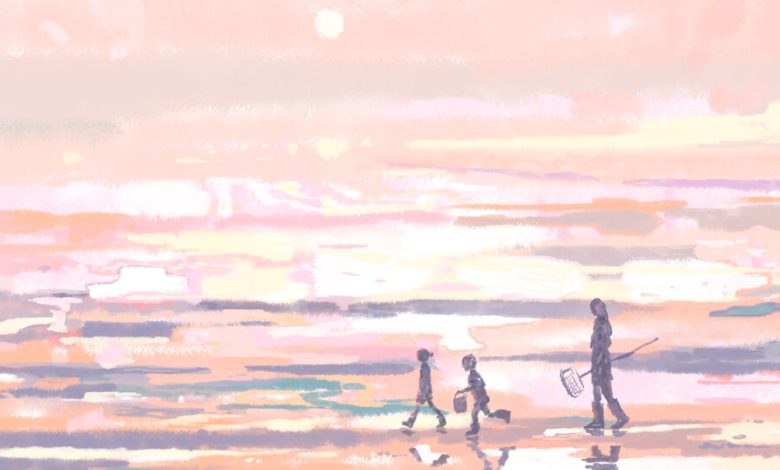Tired of Meditation? Try Looking for Clams.

On these dark winter evenings, when the end of the day has crept up all too quickly and both of my children are speaking to me at once while I’m trying to follow a recipe and my laptop is still open with incomplete work, I find myself daydreaming of summer. I think of the one activity and place that quiets my mind and restores my drained reserves: clamming on Cape Cod, which is foraging for clams, from large quahogs that can be baked or used for chowder to — my favorite — smaller ones, the so-called littleneck clams, that you eat raw that same day at cocktail hour.
There is a spot on the southern side of the peninsula that is empty and natural and peaceful. It requires a car that can handle dirt roads with potholes the size of sea turtles and a thick skin for racing the last stretch on foot through a mosquito-infested forest. But if you make it that far, you’re rewarded with a tranquil bay ringed by a thin stretch of sand that quickly disappears into tall grasses. The water is always the perfect temperature and remains waist-deep as far as I’ve ever walked into it.
Before I had kids, it was a novel thing to do, a much-needed active outing after days of vacation-level eating and drinking. But when I went with toddlers, the experience took a turn from diversion to devotion. The bay became part of the world I was trying to build for my children, one that is beautiful and, if treated properly, can provide for you. The act of clamming became an unexpected escape, a moment when I wasn’t thinking about 20 disparate things, when I wasn’t really thinking at all.
The routine is the same: We set the children up on the little beach, where they make sand castles or search for fiddler crabs. Armed with a clam rake — a long wooden pole attached to a metal basket that is edged with sharp tines so you can scrape and scoop — we wade out into the water until we each find a spot that feels lucky. Typical of New England, you can’t see an inch below the surface of the water, so to clam, you gently scrape the rake across the ocean floor, feeling through the pole, listening with your hands to see what is down there. You learn that a tug is just a clump of seaweed. A clang is a rock. A panicked clamor is God knows what and best to move along. But if your palms can detect a gentle zip, like running a fingernail over corduroy, then you might be scraping the corrugations of a clam shell. If you can feel the tines tap something hard but not too solid, and entrenched but not too stuck, you may have a clam. So you dig, scoop and lift. Out of the water rises your rake, and if you listened well, you will have a clam sitting in it. You deposit your treasure in a metal basket that sits in an inner tube and floats beside you, connected to your wrist by a cord.
To clam properly, you have to relinquish your thoughts and expectations and preconceptions, even those of how your senses work. You have to become one with the rake; you have to have eyes and ears on the ocean floor. It’s akin, perhaps, to what some get out of meditation. I’m an aspiring meditator. But as someone who, before a torn meniscus, always used running as stress relief, I have a long road ahead of me before I can find peace sitting in one place. With clamming, I feel that I come close. (Maybe I would be better at meditating if it promised a martini and raw bar at its conclusion.)
This year, for the first time, my children wanted to join in the clamming. I was worried that it would take some of the peacefulness away — which it did — but I was happy for them to give it a try. My daughter delivered a stream-of-consciousness narrative of what we were doing, and I kept yelping when my son almost raked my feet. But there was joy in having something to teach them, to share with them, to connect them not only to a generational tradition but also to the history of the land, where the Mashpee Wampanoag used to harvest from these same waters — and still do. There was a disruption to our usual dynamics as we embarked on a treasure hunt together, communing as much with one another as with nature. And when they raised their basket and it wasn’t a rock for the hundredth time, but rather a shining littleneck, it was a richer moment than if they had struck gold. Seeing a child, with ocean water gleaming off his perfect skin, holding up a mollusk with an expression of success on his face does more for the heart than any meditation ever could.
I hope that one day my children will view clamming as the respite that I do. They are not there yet. At this point, it is more adventure than retreat. At the end of our clamming morning, when we had gathered our quota, my 6-year-old refused to leave, insisting she needed one more clam. We leaned against our rakes and waited. In her final act, full of defiance, she slammed the rake down into the shallow water, and when she lifted it back up into the air, we saw that she had stabbed a clam between the halves of its shell with a tine of the rake. She beamed with pride. To be fair, perhaps what she needed to get from clamming was not what I needed. Perhaps what she needed was to have a tiny bit of control over this wild world, one in which she has little say. In that moment, she was victorious, if not in calm, then in clam.
Kim Gooden publishes the Creators Forum, a Substack that explores motherhood and creativity. She is the former managing editor and copy chief of The California Sunday Magazine. She lives in Beacon, N.Y.



